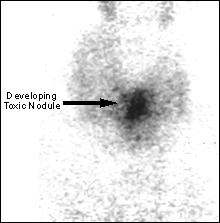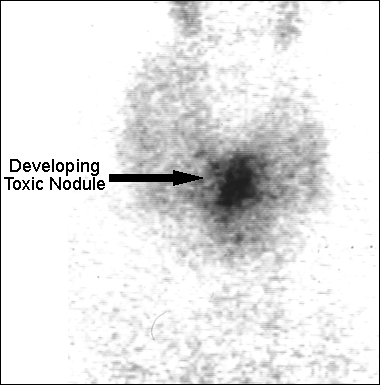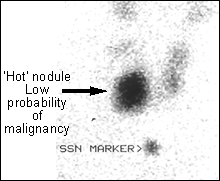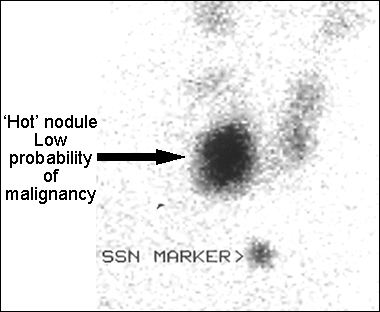Thyrotoxicosis
Toxic multinodular goitre
- Multinodular goitre 1
- Multinodular goitre 2
- Multinodular goitre 3
- Multinodular goitre 4
The heterogeneous uptake observed on the thyroid scan in patients with developing autonomous nodules is due to increased uptake in the areas of developing autonomy , and reduced uptake in areas of normal thyroid tissue which are suppressed.
Areas of reduced uptake may also be due to colloid cystic areas within the multinodular gland.
Dominant ‘cold nodules’ should be further investigated with fine needle aspiration as a coexistant malignancy must be excluded.
The incidence of malignancy in cold nodules is 6%.


Image A: 99m Tc Thyroid scan in Multinodular Goitre
Move your mouse over the image to see a larger version.
Image A: TFTs in this patient were within the normal range but the TSH was towards the lower end of the range indicating developing autonomy.



